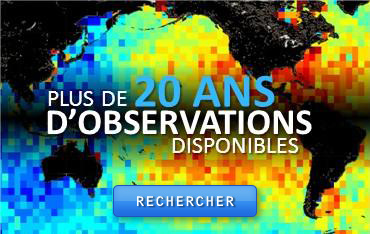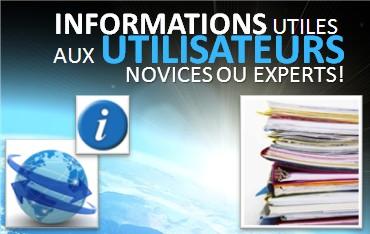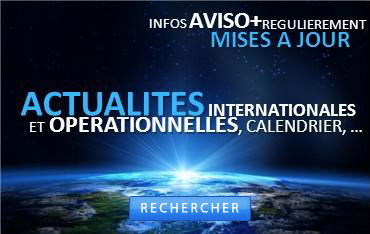Presentations
Here are the oral presentations made for the first Saral/AltiKa NRT Verification workshop meeting, held in Toulouse on 27th-29th August 2013.
1. Pierre Sengenes
Introduction of the meeting (objectives)
2. Jocelyne Noubel
SARAL mission status: Brief overview of the mission and payload status (focusing on the data products and main milestones).
3. Nicolas Picot/Sophie Mazeau
SALP status: Brief overview of the SALP processing center status – focusing on the I/GDR products. Scope of the first patch – envisaged evolutions -
4. Susanne Dieterle
Eumetsat status: Brief overview of the EumetSat processing center status – focusing on OGDR products, including BUFR.
5. ISRO (Suchandra Aich Bhowmich)
ISRO status: Brief overview of the ISOR processing center status – focusing on OGDR products.
6. Nicolas Picot/Nathalie Steunou
AltiKa instrument performances: In orbit performances, specific calibrations, workplan (calibrations, HD,...).
6bis. Nathalie Steunou
7. Christian Jayles
Diode performances comparison to MOE
8. Luca Cerri
MOE and POE processing, satellite model used, data quality, laser residuals...
9. Pascal Bonnefond
Early results of the Short Arc analysis
10. Philip Callahan
Initial AltiKa Cal/Val Activities at the Jet Propulsion Laboratory: Retracking of SARAL data using JPL method – validation against Jason-2. Analysis of the waveforms behaviors (types of corruption that occur in various environmental conditions).
11. Jean-Christophe Poisson
Processing of Altika waveforms: PEACHI Ka band retracking algorithms over ocean – work plan and early results (numerical retracking – RED3 – 2 passes – LSE ...).
12. Pierre Prandi
Exploring the behavior of a Ka-band altimeter in the Arctic Ocean: Ka-band Backscatter coefficient during this year’s Arctic melting season. Comparing SARAL/AlitKa Ka-band and CryoSat-2 Ku-band backscatter coefficients shows that the two missions display very different behaviors over the melting Arctic sea ice.
13. Pierre Thibaut/Nathalie Steunou
Sigma0 analysis comparison of MLE3 and MLE4 and with Jason-2 Ku band: Analysis of the attenuation algorithm.
14. Jean-Christophe Poisson
15. Graham Quartly
Effective rain-flagging: tests have found that the best single indicator of the likely error in a 1 Hz range estimate is the variability in the 40 values that produce that mean.
16. Marie-Laure Frery
AltiKa Radiometer: early in-flight calibration and validation of geophysical products
Radiometer stability - brightness temperatures quality – comparison with other flying radiometers – validation of the geophysical products and new neural network.
17. Sabine Philipps
Global SARAL Data Quality Assessment of IGDR and GDR data over ocean: A focus is done on the data availability and validity. Furthermore the main altimeter and radiometer parameters are analysed and compared to other altimeter missions such as OSTM/Jason-2. Impact of GDR data (notably of the more precise orbit POE) is presented.
18. Suchandra Aich Bhowmick
Calibration and Validation of geophysical products from SARAL/AltiKa: SARAL SSH is calibrated using in-situ observations from Indian calibration site located at Kavarrati and from global NDBC buoys. An inter-comparison of the data with the available Jason-2 altimeter is also performed.
OGDR data has been used to carry out the data assimilation in wave model SWAN used for operational wave prediction near Indian coast.
18bis. R.M. GAIROLA
Wind Speed estimation using SARAL/AltiKa Backscatter
20. Pascal Bonnefond
Absolute calibration of SARAL/AltiKa in Corsica: results toward the tide gage and the GPS buoys.
21. Fabien Durand (Jacques Verron)
22. Pierre Queffeulou (Pierre Thibaut)
SARAL/AltiKa SWH validation against other altimeter missions and NDBC buoy data: Need of an improved flagging to remove spurious data.
23. John Lillibridge
One and Two-Dimensional Wind Speed Models for Ka-band Altimetry: Validation against independent ocean buoy wind speeds. In addition results from S. Abdallah analysis will be presented.
23bis. Saleh Abdalla and Peter Janssen
Global Verification of Wind, Wave, and MWR Water Content NRT Products from SARAL/AltiKa
24. Lotfi Aouf
Wave validation and assimilation in the MeteoFrance model
25. Alexei Kouraev (Frédérique Remy)
Radar altimetry and radiometry and in situ observations for study of ice cover of Eurasian water bodies and rivers.
Results on the lake Baikal in March-April 2013 along two SARAL/AltiKa satellite tracks (simultaneous with the passage of the satellite) - ice cover structure and its influence on the altimetric waveforms. Analysis of the temporal evolution of the waveforms and waveform parameters.
26. Elena Zakharova (Kevin Guerreiro)
Multi-band radar altimetry to study hydrology of boreal wetlands and estuaries: Radar signal behavior in different landscapes of Western Siberia wetlands using the multi-band approach. Study of the hydrological processes in wetlands at different temporal (from multi-year to seasonal) and spatial (from local to regional) scales.
27. Aurélie Michel
SARAL/AltiKa performance assessment over ice sheets: Presentation of the validation tool and preliminary analysis with comparison with Icesat and Envisat.
28. Jean-Christophe Poisson
Ice2 retracking improvements: Impacts on the retracking estimates of different ice2 parameterization and/or evolutions.
29. Denis Blumstein
Analysis of AltiKa waveforms data over Antarctica: Influence of the topography on the waveforms over various areas of Antarctica - comparisons between AltiKa and Envisat missions - preliminary results about the estimation of the radar wave penetration into the snow from direct inversion of waveforms data and their consequences in term of height retrieval by the retracking algorithms.
30. Frédérique Rémy
SARAL/Altika for ice sheet survey: Cal-val results - penetration in Ka-band versus in Ku-band. Backscatter temporal behavior analysis.
31. Guillaume Valladeau
PEACHI a new prototype for assessment of dedicated Ka band algorithms: Focus on the coastal zone including analysis of radiometer performances.
32. James Richman
Monitoring the SARAL/AltiKa altimeter performance in the global ocean forecast system: Error analysis of SARAL SSH – assimilation of SARAL in Hycom global model and assessment of the improvements obtained with this new data set.
33. David Griffin
Use of AltiKa NRT sea level anomaly in the Australian multi-mission analysis: Analysis of the data quality – multi mission maps.
34. Yannice Faugère
AltiKa in DUACS: example of the DUACS maps and the improvements obtained with SARAL.
34bis. Elisabeth Rémy
Assimilation of the SARAL/AltiKa SLA data in the Mercator Ocean analysis and forecasting system
34ter. Suchandra A. Bhowmick
Validation of SARAL/AltiKa geo-physical products using in-situ and satellite observations
35. Stéphane Calmant
Retrieval of river levels from AltiKa measurements on-board SARAL: Analysis of SARAL data quality over some river reaches in a variety of situations, e.g. large, medium and very narrow stems.
36. Philippe Maillard
Spatial processing techniques for Saral/Altika altimetry of the Sao Francisco River, Brazil: Processing to correct or exclude altimetry measurements not related to the water level. tested on a 1000 km stretch of the São Francisco River in Brazil. Comparison with Envisat data.
38. Nicolas Picot
SARAL product evolution: discussion.
39. Jacques Verron

















